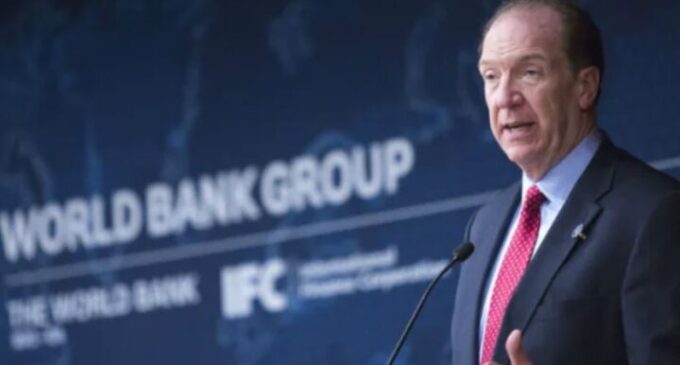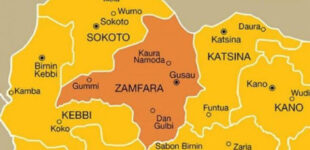World Bank: Low income countries’ debt doubled in last decade — up by $9trn in 2021

The World Bank says the external debt stock of low-income and middle-income countries doubled over the past decade to $9 trillion at the end of 2021.
Last year, the debts rose by 12 percent to a record of $860 billion in 2020 from $770 billion in 2019.
David Malpass, president, World Bank, disclosed this on Tuesday during the launch of the International Debt Report, 2022.
According to Malpass, the bank’s latest debt statistics report showed that the debt crisis in the world’s poorest countries is intensifying
He added that this has made debt restructuring harder.
According to the president, increasing debts brings three risks; a global recession in 2023, a multi-year period of slow growth, widespread asset repricing as higher interest rates are applied, and hedges running out.
He, however, added that many of the impacts will be delayed even into 2024 and 2025 including debt restructurings.
“The total external debt of low- and middle-income countries doubled over the last decade, reaching $9 trillion at the end of 2021. For the IDA-eligible countries, the poorest, debt reached $1 trillion, nearly tripling since 2010. Their debt service payments on external public and publicly guaranteed debt are expected to surge 35 percent in 2022, to $62 billion up from $46 billion in 2021,” Malpass said.
“This will exhaust scarce fiscal resources needed for electricity, water, nutrition, health, education, and climate action. Over 40 IDA-eligible low-income countries are at high risk of debt distress or are already in it. Debt crises are also spreading to middle-income countries.
“The composition of debt has changed dramatically too, making much-needed debt restructurings harder.
“More of the debt is to private creditors. Debt owed by low- and middle-income countries on their public and publicly guaranteed debt to private creditors at the end of 2021 was 61 percent, that’s up from 46 percent in 2010. Much of that increase came from increased bond issuance, with bondholders now accounting for nearly 80 percent of the privately held debt. For IDA countries, this was $76 billion owed to bondholders, making restructurings difficult.
“And more of the debt is owed to non-Paris Club creditors. That’s another change in the composition. Debt owed to government creditors that don’t belong to the Paris Club has soared. China is the biggest example of the trend.”
The World Bank president, however, said to address the debt crisis, nations should focus on improvements in three areas — debt sustainability, transparency, and restructuring.














There are no comments at the moment, do you want to add one?
Write a comment